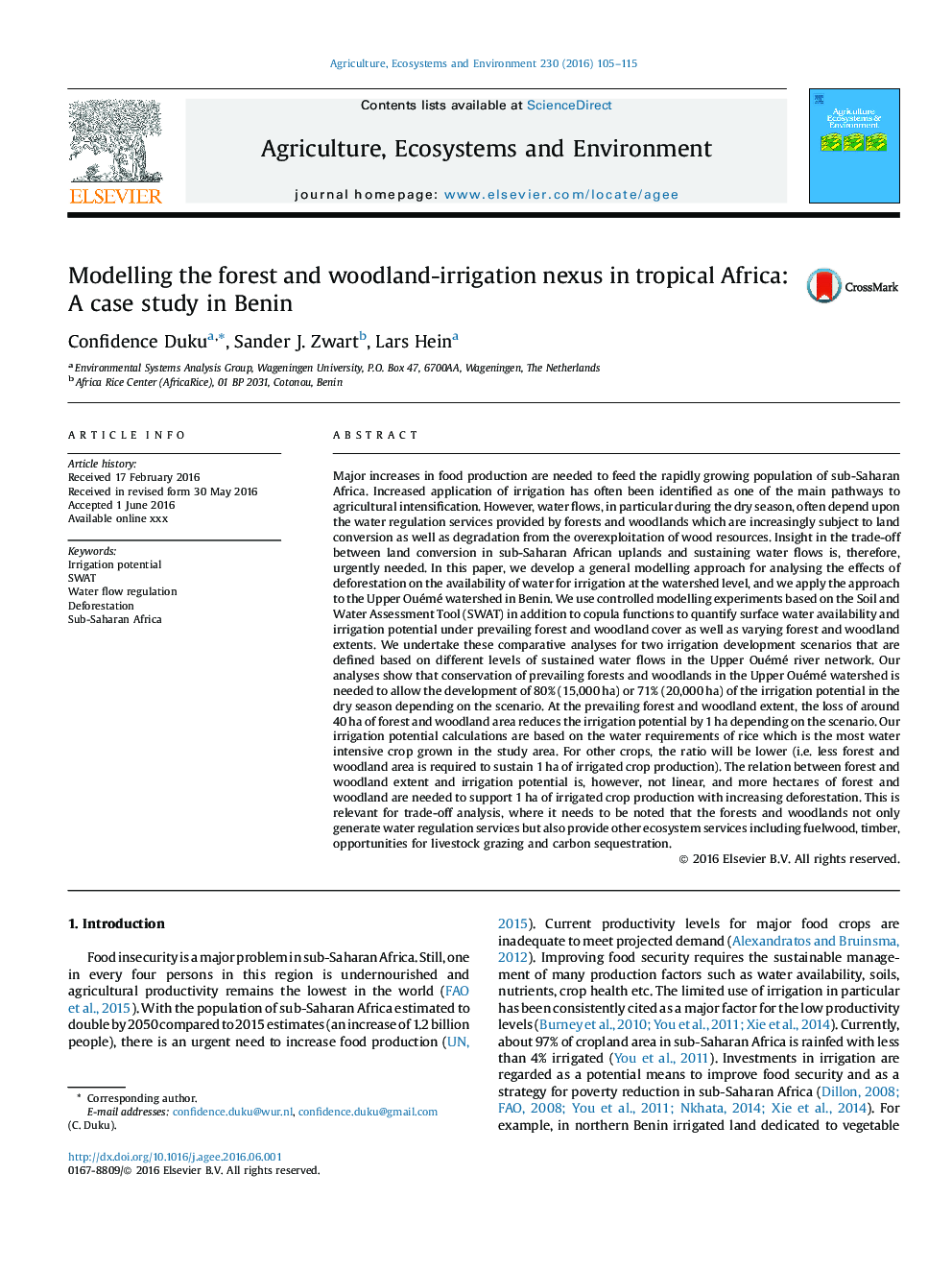| کد مقاله | کد نشریه | سال انتشار | مقاله انگلیسی | نسخه تمام متن |
|---|---|---|---|---|
| 8487381 | 1552022 | 2016 | 11 صفحه PDF | دانلود رایگان |
عنوان انگلیسی مقاله ISI
Modelling the forest and woodland-irrigation nexus in tropical Africa: A case study in Benin
ترجمه فارسی عنوان
مدل سازی جنگل و نابودی آبیاری جنگل در آفریقای گرمسیری: مطالعه موردی در بنین
دانلود مقاله + سفارش ترجمه
دانلود مقاله ISI انگلیسی
رایگان برای ایرانیان
موضوعات مرتبط
علوم زیستی و بیوفناوری
علوم کشاورزی و بیولوژیک
علوم زراعت و اصلاح نباتات
چکیده انگلیسی
Major increases in food production are needed to feed the rapidly growing population of sub-Saharan Africa. Increased application of irrigation has often been identified as one of the main pathways to agricultural intensification. However, water flows, in particular during the dry season, often depend upon the water regulation services provided by forests and woodlands which are increasingly subject to land conversion as well as degradation from the overexploitation of wood resources. Insight in the trade-off between land conversion in sub-Saharan African uplands and sustaining water flows is, therefore, urgently needed. In this paper, we develop a general modelling approach for analysing the effects of deforestation on the availability of water for irrigation at the watershed level, and we apply the approach to the Upper Ouémé watershed in Benin. We use controlled modelling experiments based on the Soil and Water Assessment Tool (SWAT) in addition to copula functions to quantify surface water availability and irrigation potential under prevailing forest and woodland cover as well as varying forest and woodland extents. We undertake these comparative analyses for two irrigation development scenarios that are defined based on different levels of sustained water flows in the Upper Ouémé river network. Our analyses show that conservation of prevailing forests and woodlands in the Upper Ouémé watershed is needed to allow the development of 80% (15,000Â ha) or 71% (20,000Â ha) of the irrigation potential in the dry season depending on the scenario. At the prevailing forest and woodland extent, the loss of around 40Â ha of forest and woodland area reduces the irrigation potential by 1Â ha depending on the scenario. Our irrigation potential calculations are based on the water requirements of rice which is the most water intensive crop grown in the study area. For other crops, the ratio will be lower (i.e. less forest and woodland area is required to sustain 1Â ha of irrigated crop production). The relation between forest and woodland extent and irrigation potential is, however, not linear, and more hectares of forest and woodland are needed to support 1Â ha of irrigated crop production with increasing deforestation. This is relevant for trade-off analysis, where it needs to be noted that the forests and woodlands not only generate water regulation services but also provide other ecosystem services including fuelwood, timber, opportunities for livestock grazing and carbon sequestration.
ناشر
Database: Elsevier - ScienceDirect (ساینس دایرکت)
Journal: Agriculture, Ecosystems & Environment - Volume 230, 16 August 2016, Pages 105-115
Journal: Agriculture, Ecosystems & Environment - Volume 230, 16 August 2016, Pages 105-115
نویسندگان
Confidence Duku, Sander J. Zwart, Lars Hein,
